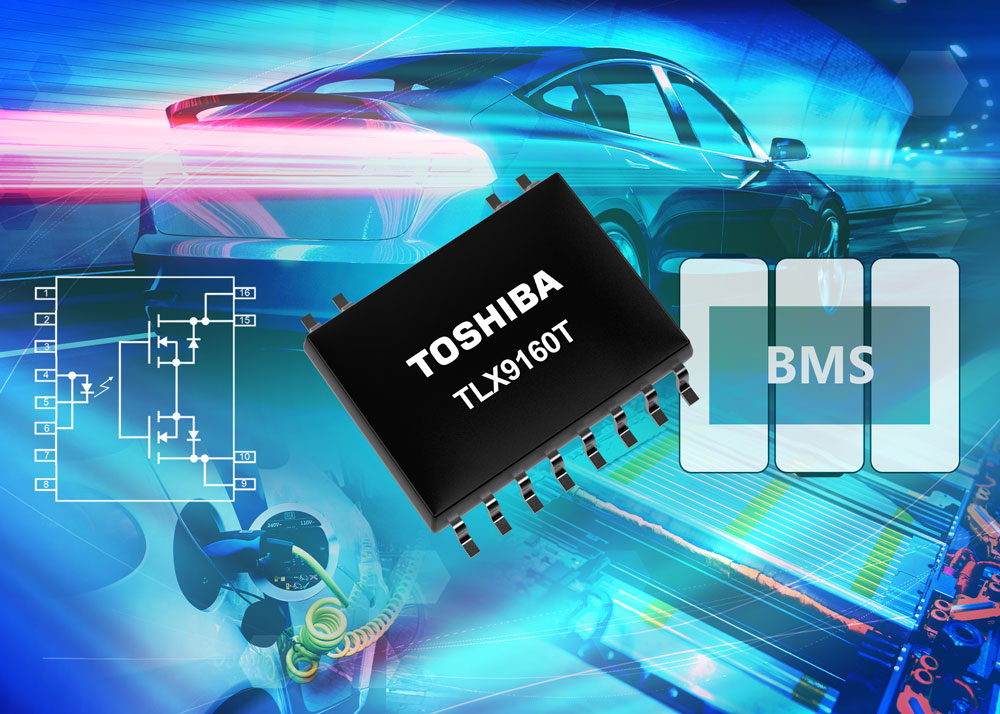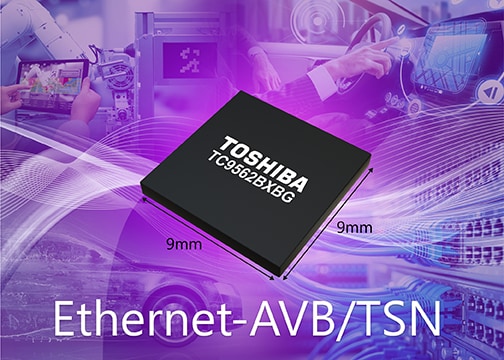- General Top
- SEMICONDUCTOR
- STORAGE
- COMPANY
-
My ToshibaSemicon
- Semiconductor Top
-
ApplicationsAutomotive
Body Electronics
xEV
In-Vehicle Infotainment
Advanced Driver-Assistance Systems (ADAS)
Chassis
IndustrialInfrastructure
BEMS/HEMS
Factory Automation
Commercial Equipment
Consumer/PersonalIoT Equipment
Healthcare
Wearable Device
Mobile
Computer Peripherals
-
ProductsAutomotive Devices
Discrete Semiconductor
Diodes
Transistors
Logic ICs
Analog Devices
Digital Devices
Wireless Devices
※
: Products list (parametric search)
Power SemiconductorsSiC Power Devices
※
: Products list (parametric search)
Isolators/Solid State RelaysPhotocouplers
Digital Isolators
Solid State Relays
Fiber Optic Transmitting Modules
※
: Products list (parametric search)
MOSFETsIGBTs/IEGTsBipolar Transistors※
: Products list (parametric search)
Diodes※
: Products list (parametric search)
MicrocontrollersMotor Driver ICsIntelligent Power ICs※
: Products list (parametric search)
Power Management ICsLinear ICs※
: Products list (parametric search)
General Purpose Logic ICsLinear Image SensorsOther Product ICsOther Product ICs
※
: Products list (parametric search)
-
Design & Development
Design & Development
Innovation Centre
At the Toshiba Innovation Centre we constantly strive to inspire you with our technologies and solutions. Discover how to place us at the heart of your innovations.
-
Knowledge
Knowledge
Highlighted Topics
Further Materials
Other
- Where To Buy
- Part Number & Keyword Search
- Cross Reference Search
- Parametric Search
- Stock Check & Purchase
This webpage doesn't work with Internet Explorer. Please use the latest version of Google Chrome, Microsoft Edge, Mozilla Firefox or Safari.
require 3 characters or more. Search for multiple part numbers fromhere.
The information presented in this cross reference is based on TOSHIBA's selection criteria and should be treated as a suggestion only. Please carefully review the latest versions of all relevant information on the TOSHIBA products, including without limitation data sheets and validate all operating parameters of the TOSHIBA products to ensure that the suggested TOSHIBA products are truly compatible with your design and application.Please note that this cross reference is based on TOSHIBA's estimate of compatibility with other manufacturers' products, based on other manufacturers' published data, at the time the data was collected.TOSHIBA is not responsible for any incorrect or incomplete information. Information is subject to change at any time without notice.
require 3 characters or more.
Photorelays support mechanical relays in EV BMS applications

Mechanical relays have long been the sole choice for high-energy automotive applications where hundreds of volts and / or amperes must be switched. While mechanical relays provide the load capacity for this type of application, there is potential for the contacts to stick and ultimately weld together. Should this occur, then a dangerous situation arises where power cannot be removed from the load, leading to the potential for injury or fire.
Therefore, EV designers must check for contact welding of any mechanical relay deployed in their designs. Doing so does not require significant current handling, making it an ideal application for a high voltage photorelay that, as a solid-state device, exhibits no risk of sticking.
Photorelays are highly valuable in the battery management system (BMS) within EV applications where they are used in mechanical relay welding detection, battery voltage monitoring and ground fault detection. While current handling is low, these photorelays are often required to switch high voltages.
EV and hybrid vehicle batteries provide very high levels of electrical energy for drivetrain / traction. As a result, it is important to know the individual battery cell voltages and the total voltage of the entire battery, meaning that they should be actively monitored.
This voltage monitoring is required during use and charging, therefore mechanical relays with limitations on contact opening/closing and slow switching speeds are generally considered unsuitable. However, as it is common to measure using a high ohmic shunt resistor, a photorelay is ideal as an ON/OFF switch in voltage monitoring circuits.
Electrification of all types of vehicles, including EVs, is benefitting the environment, operating efficiency, functionality, and comfort. However, the presence of high voltages throughout the vehicle mandates higher levels of equipment safety, especially ensuring that the battery voltage cannot flow into the chassis.
In particular, there is a significant risk of electric shock to vehicle occupants in the event of a ground fault or short circuit. For this reason, a ground fault detection circuit is required for vehicles equipped with high-voltage batteries.
The presence or absence of this ground fault is checked frequently, including when driving, stopping, charging, and at other times. However, if the ground fault detection switch welds and remains in the ON state, normal detection cannot be performed. For this reason, it is common to use a high withstand voltage photorelay that is free from contact wear and welding risk.
Toshiba has published a white paper on high voltage photorelays in automotive applications – to download your free copy, please click here:






